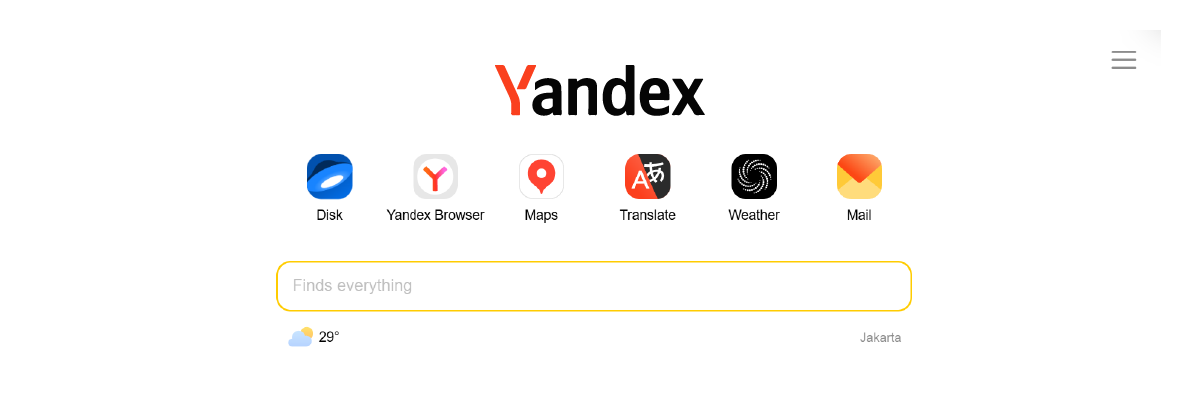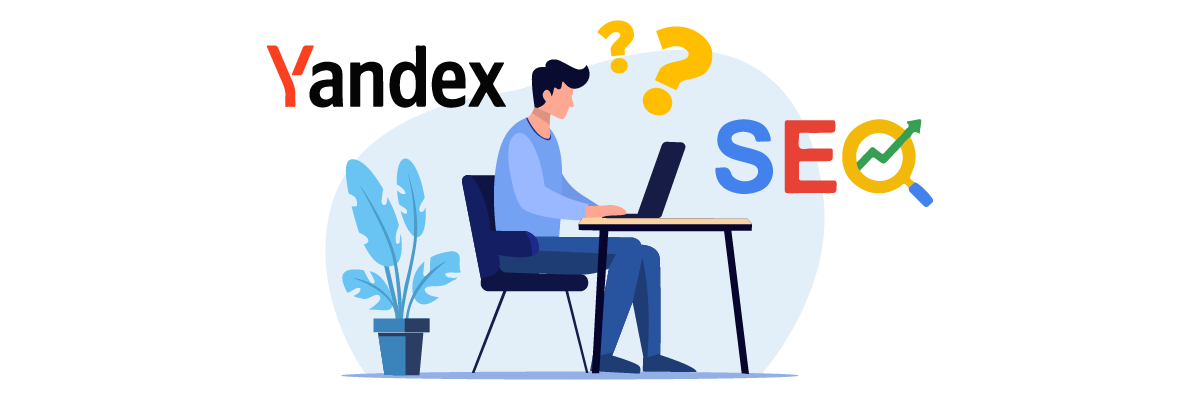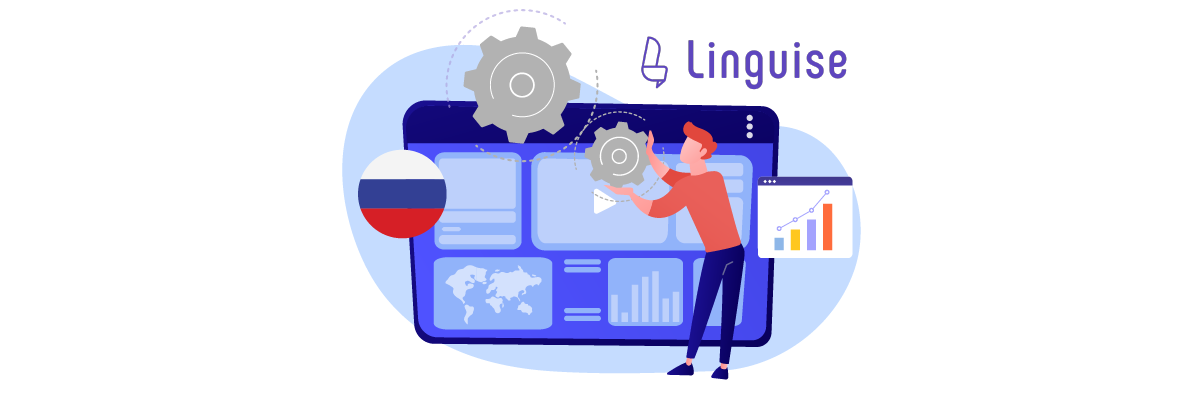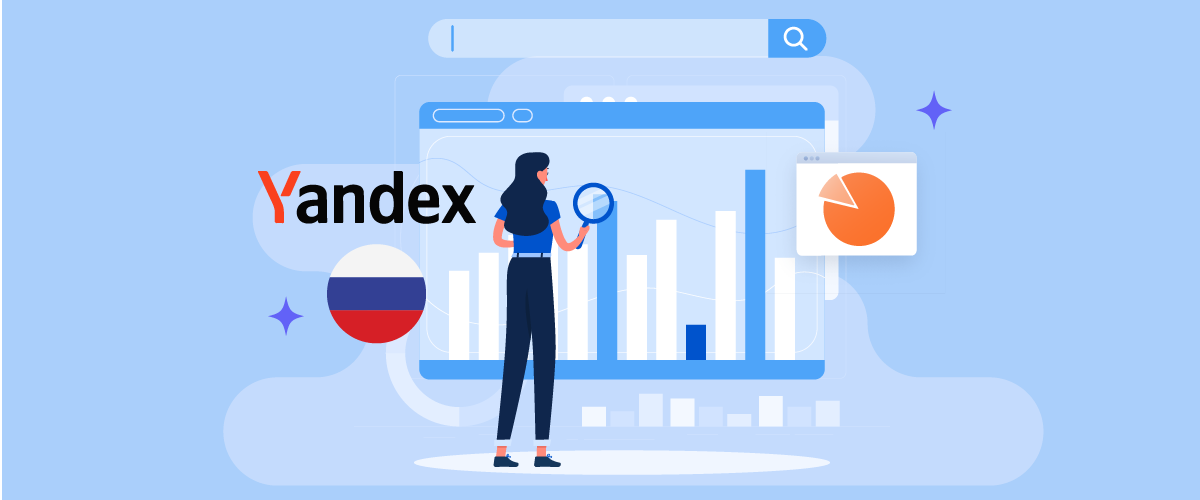Yandex SEO is the key to dominating the search market in Russia. Unlike Google, Yandex has unique algorithms and ranking factors, meaning that what works for Google SEO won’t necessarily work for Yandex. If your business targets a Russian audience, understanding how Yandex operates can be the difference between success and getting lost in search results.
This article’ll explore how Yandex works, why Yandex’s SEO differs from Google’s, and the best strategies to drive traffic on Russia’s leading search engine. From on-page optimization and geotargeting to avoiding penalties from Yandex’s algorithms, this guide will help you navigate the ins and outs of SEO in Russia’s digital landscape.
What is Yandex?

Yandex is the leading search engine in Russia, developed and operated by Yandex LLC, a multinational technology company. While many people may associate it solely with search capabilities, Yandex has evolved into a full-fledged technology ecosystem, offering various digital services similar to Google. These include Yandex Mail (similar to Gmail), Yandex Maps (comparable to Google Maps), Yandex Browser (similar to Chrome), and even ride-hailing services like Yandex Taxi, among many others.
The name “Yandex” was officially introduced in 1993, standing for “Yet Another iNDEXer,” a nod to the growing number of emerging search engines. Since then, Yandex has expanded its influence beyond Russia, becoming widely used in countries such as Belarus, Kazakhstan, Ukraine, and Turkey.
Yandex’s deep understanding of the Russian language and local search habits set it apart. Unlike Google, which primarily caters to global audiences, Yandex is designed to handle the complexities of the Cyrillic alphabet, Russian grammatical structures, and regional nuances. This makes it the preferred search engine for Russian-speaking users despite Google’s availability in the region.
For businesses looking to establish a strong online presence in Russia, optimizing for Yandex is crucial. However, it comes with unique challenges, such as language barriers, local SEO preferences, and specific ranking algorithms that differ from Google.
Why is Yandex important for SEO in Russia?

If you’re targeting the Russian market, relying solely on Google optimization may not be enough. Yandex dominates Russia’s search landscape, making it a crucial platform for SEO strategies.
While Google is still accessible in Russia, Yandex is preferred by most Russian users due to its advanced understanding of the Russian language, local search habits, and unique ranking algorithms. Optimizing for Yandex can give businesses a competitive edge and help them reach a wider audience in Russia and neighboring countries.
- Yandex’s dominance in the Russian market – Yandex dominates the Russian search engine market, holding approximately 73% of the total market share, making it the country’s most widely used search engine. Beyond Russia, Yandex’s influence extends to several neighboring countries, including Belarus, Kazakhstan, and Uzbekistan, further solidifying its position as a leading search engine.
- Localized SEO and geotargeting advantages – Yandex prioritizes regional search relevance, giving businesses a better chance to rank by optimizing for specific Russian regions. Unlike Google, which relies on backlinks and domain authority, Yandex factors in geographical location. Its geotargeting tools help businesses appear in local searches like “best cafes in Moscow”, ensuring more relevant results and better visibility.
- Lower competition and cost-effective paid advertising – With lower competition, Yandex makes ranking well-optimized sites easier. Its Yandex.Direct platform offers a more affordable CPC than Google Ads, and ranking on Yandex also boosts visibility on Mail.ru, which uses its search technology.
- Better indexing for Russian content – Yandex’s advanced understanding of Russian grammar and syntax makes it superior to Google in indexing Russian content. This allows businesses to reach Russian-speaking users more effectively, boosting engagement and conversions.
How does Yandex differ from Google SEO?

Google is one of the best search engines in the world and a reference for many people when it comes to searching online. However, while better known in Russia and neighboring countries, Yandex also has a unique SEO approach that sets it apart from Google. While both aim to provide the best search results, some important differences exist in how they organize their SEO algorithms.
Here is a comparison between Yandex and Google SEO based on some important aspects:
Aspects | Google SEO | Yandex SEO |
Language & location preference | Prioritizes English-language content and global reach. | Focuses on the Russian language and local search relevance. |
Keyword usage | Uses semantic algorithms to understand context. | Emphasizes exact keyword matching. |
Backlink vs. social signals | Prioritizes backlinks as a main factor. | It relies more on user behavior signals than backlinks. |
Meta keywords tag | No longer considered a ranking factor. | Still relevant for Yandex SEO. |
Local SEO | Google My Business is a key factor. | Gives priority to location-based search automatically. |
Crawling speed | Faster at crawling and indexing pages. | It tends to be slower at indexing new content. |
Webmaster tools | Uses Google Search Console for site monitoring and performance tracking. | Uses Yandex Webmaster for indexing control and search optimization. |
Domain age | Domain age matters but is not a top factor. | Sites with older domains are given priority in ranking. |
Antispam methodology | It reduces duplication and spam but is more flexible. | Enforces strict rules against spam and over-optimization. |
10+ Yandex SEO guide to get traffic in Russia
Utilizing Yandex as the country’s main search engine is a strategic move to attract more visitors from Russia. Here are some tips that can help you increase your site’s visibility and traffic on Yandex.
Localize your website with Russian nuances

Localization for Russia goes beyond simply translating your content into the Russian language. It’s about adapting your website to resonate with Russian users’ local culture, behavior, and preferences. When localizing content for a Russian audience, addressing nuances beyond simple translation is important. Here are the key points to consider:
- Use local currency (Russian Ruble) and integrate popular Russian payment methods such as Yandex.Money or Qiwi for e-commerce transactions.
- Ensure your website’s visuals and design reflect Russian culture, including local holidays, traditions, and general aesthetic preferences.
- Adopt a formal tone for the content, as Russian users typically expect a more professional approach than other regions.
- Include social media links to platforms like VKontakte (VK), which is widely used in Russia, and international networks like Facebook.
- Be mindful of Russian users’ specific tastes and expectations, ensuring that your content resonates with them culturally and practically.
For example, if your business offers e-commerce, you might need to integrate payment options like Yandex.Money or Qiwi is widely used in Russia. Additionally, ensuring that your site’s tone and style match Russian norms is key, as Russians may expect a more formal tone than other regions.
Localizing your content to address the specific tastes and expectations of Russian users will not only make your website more accessible but also increase trust and relevance in the local market.
Utilizing Yandex Webmaster for indexing and optimization
Just as Google has Google Search Console, Yandex also provides Yandex Webmaster to manage a site’s presence in its search engine. Yandex Webmaster allows site owners to monitor indexing status, optimize search performance, and identify and fix technical issues.

Properly configuring the site in Yandex Webmaster can significantly improve its visibility and ranking. This tool has several features that can improve your SEO.
- Registering and verifying site ownership in Yandex Webmaster.
- Check indexed pages, request indexing, and set crawling.
- Analyzing search queries that drive traffic to the site.
- Evaluate site structure, internal links, structured data, and sitemaps.
- Receive notifications regarding SEO issues such as content duplication, missing meta tags, and broken links.
For example, if your website has pages that do not appear in Yandex search results, you can use the “Crawling Statistics” feature to identify potential issues. Additionally, submitting an XML sitemap ensures Yandex discovers and indexes your content faster.
By actively using Yandex Webmaster, you can maintain an optimized website, improve indexing speed, and increase your chances of ranking higher in Yandex search results.
Geotargeting & local SEO
Geotargeting allows you to customize your website’s visibility based on a specific geographic location, ensuring your content ranks higher for users in that region. Yandex, like Google, uses geographical signals to display the most relevant search results for users based on their location. Setting up geotargeting in Yandex.Webmaster, which allows you to specify target regions, is a good first step.
Regarding local SEO, your website should reflect the local nuances of your target regions. This includes providing localized content, using region-specific keywords, and registering your business with local directories. It also helps to ensure that your business’s IP address, contact information, and domain registration align with your target region.
For example, if you are targeting St. Petersburg, ensuring that your website’s server is located in Russia and that your contact details are specific to the city can improve local search visibility. By leveraging these practices, you can increase your chances of ranking higher for users in specific Russian cities and regions.
Optimizing for image search

Optimizing your images for Yandex search can significantly improve your website’s visibility. Yandex values well-optimized images, and properly optimized images can improve your page ranking and your image ranking on Yandex.Image search. Optimizing images for Yandex search is essential to enhance your website’s visibility in its image search results. Here are the key points to keep in mind for image optimization:
- Ensure your images are high quality but not too large in file size. Use efficient formats like JPEG, PNG, or GIF to balance quality and performance.
- Always include descriptive alt text and captions for each image. This helps Yandex understand the image content and improve its relevance in image search results.
- The content around the image plays a significant role. Ensure the text surrounding the image is relevant and adds context to improve its ranking.
- Use file names that describe the image content rather than generic names like “image1.jpg.” For instance, “modern-white-sofa.jpg” gives better context for search engines.
- Ensure the image is placed within a context-rich page, like product descriptions for an e-commerce store, which helps Yandex understand the image and its relevance to search queries.
For example, if you’re running an e-commerce store and selling furniture, ensure that product images have clear, descriptive alt text like “modern white sofa” instead of vague terms like “sofa.” This helps both Yandex’s algorithms and your users understand the image, making it more likely to appear in relevant image search results.
Leveraging image schema markup
Image schema markup can enhance how your images are presented in Yandex’s search results, improving their visibility and ranking. Using schema markup in your website’s code, you can provide Yandex with more information about your images, such as titles, descriptions, captions, and even the image’s location. Yandex supports schema markup in the Microdata format, unlike Google, which prefers JSON-LD. This structured data helps Yandex better understand the content and context of your images, which can result in more accurate and detailed image results.
For example, if you want to mark up an image of a restaurant’s interior you can use code schema markup like this.
<div itemscope itemtype="https://schema.org/ImageObject">
<img data-lazyloaded="1" src="data:image/gif;base64,R0lGODdhAQABAPAAAMPDwwAAACwAAAAAAQABAAACAkQBADs=" decoding="async" data-src="restaurant-interior.jpg" alt="Cozy restaurant interior with warm lighting" itemprop="contentUrl">
<meta itemprop="name" content="Restaurant Interior">
<meta itemprop="description" content="A cozy restaurant with a modern ambiance, ideal for dining with family and friends.">
<meta itemprop="datePublished" content="2024-02-04">
<meta itemprop="location" content="Moscow, Russia">
<meta itemprop="author" content="Restaurant Name">
</div>
In this example:
- contentUrl: URL of the image.
- name: Title of the image (restaurant interior).
- description: A description of the image (restaurant ambiance).
- datePublished: Date when the image or content was published.
- location: Location of the restaurant.
- author: The name of the restaurant.
This schema provides Yandex with rich information about the image, making it more likely to appear in relevant image search results.
Optimizing on-page SEO
On-page SEO for Yandex involves optimizing various elements of your website to align with the search engine’s algorithms. Yandex emphasizes ensuring that the content matches user intent and offers value. Here are the important aspects to focus on for on-page SEO on Yandex:
- Ensure relevant keywords are naturally integrated into the content, title tags, meta descriptions, and header tags to match user intent.
- Provide high-quality, informative content that answers user queries and offers real value.
- Optimize your website’s loading speed for a better user experience and ranking.
- Include your main keyword in the title tag to help Yandex understand the page’s relevance.
- Craft engaging and relevant meta descriptions that include keywords to improve click-through rates.
- Use header tags (H1, H2, H3, etc) strategically to organize content and signal key themes to Yandex.
For example, if your website is targeting users searching for “best winter coats in Russia,” your page should have high-quality, informative content that answers the user’s query, along with relevant keywords naturally integrated into the text, including your main keyword in the title tag, meta description, and headers will help signal to Yandex that your page is highly relevant for that particular search query.
Handling JavaScript & CSS

Yandex has made strides in its ability to crawl JavaScript and CSS content. While initially facing challenges with dynamic content loading, Yandex has improved its handling of websites that use frameworks like Angular, React, and other JavaScript-heavy setups. However, it’s important to ensure that some static content is always available for the Yandex crawlers. This means having key text or information accessible in the HTML, even if JavaScript dynamically loads some content.
In some cases, websites using single-page applications (SPAs) may encounter issues with Yandex indexing content. To address this, it is recommended to use server-side rendering (SSR) or provide a static version of the page content for crawlers.
Implementing hreflang & XML sitemap

Hreflang tags are essential for websites targeting users in multiple regions or languages. These tags inform Yandex which version of your website should be shown to users based on language and location, ensuring the right content is delivered to the right audience.
For example, if your multilingual e-commerce website sells products in Russia and the United States, the hreflang tag would tell Yandex to show the Russian version of your site to users in Russia and the English version to users in the US. Here is an example of how you would implement the hreflang tag for an e-commerce website that targets both Russian and English-speaking users in Russia and the United States:
<link rel="alternate" href="https://example.com/ru/" hreflang="ru" />
<link rel="alternate" href="https://example.com/en/" hreflang="en" />
<link rel="alternate" href="https://example.com/ru/" hreflang="x-default" />
In this example:
- The first tag tells Yandex and other search engines that the Russian version of the site is meant for users in Russia (hreflang=”ru”).
- The second tag specifies the English version of the site for users in the United States (hreflang=”en”).
- The x-default tag is a fallback, indicating the default page for users whose language or location does not match any of the specified versions.
Another important aspect of SEO for Yandex is submitting an XML sitemap. Think of it as a detailed map for Yandex’s crawlers, showing them exactly where all your pages are. It helps Yandex find and index your content more efficiently. For instance, if you run a news website with frequent updates, submitting an XML sitemap ensures that Yandex’s crawlers can discover new articles quickly.
Page-level meta tags
Page-level SEO refers to elements within the page’s HTML code that help search engines like Yandex understand the content and relevance of your webpage. Yandex pays attention to various meta tags, including the meta keywords tag, which Google no longer emphasizes. For example, Yandex still considers the meta keywords tag when determining how relevant a page is to specific search queries. Here’s how it would look in the HTML:
<meta name="Keywords" content="winter coats, Russian winter clothing, buy winter coats Russia"/>
In addition to the meta keywords tag, there are other important page-level tags like title tags, meta descriptions, and header tags. The title tag is significant because it directly influences search rankings and click-through rates. A well-crafted title incorporating relevant keywords gives users and search engines a clear understanding of the page’s content. Similarly, meta descriptions provide concise summaries of the page’s content. While Yandex may not use them directly in ranking, they influence whether users click on your page in search results.
For a page targeting winter coats in Russia, a well-optimized title and meta description might look like this:
<title>Buy Winter Coats in Russia | Best Prices on Warm Clothing</title>
<meta name="description" content="Shop the best winter coats for Russian winters. High-quality, stylish, and affordable options available for all ages."/>
Yandex’s AGS filter for low-quality content
Yandex’s AGS (Automatic Quality Score) filter is an algorithm designed to assess the quality of content on a website. If your site’s content is deemed low-quality or irrelevant, Yandex may penalize it by lowering its ranking. To avoid being affected by the AGS filter, focus on creating content that provides value to your audience.
For example, instead of writing generic, keyword-stuffed articles like “cheap Russian souvenirs,” focus on crafting detailed guides that explain the cultural significance of Russian souvenirs, their history, and where to find authentic pieces. High-quality, informative content will likely engage users and pass the AGS filter, helping your pages rank higher in Yandex’s search results.
Additionally, Yandex’s AGS filter rewards content that is original and well-researched. Sites with content that is repetitive, thin, or lacks substance may be considered low quality, which can result in a penalty. Therefore, it’s important to avoid copying content from other websites and focus on delivering unique insights and valuable information.
Yandex ICS (site quality score)
Yandex uses a quality score system known as ICS (Indexing Quality Score) to determine how trustworthy and authoritative a site is. A higher ICS score improves your chances of ranking well in Yandex’s search results, while a lower score can hurt your visibility. For instance, if your website has high-quality content that answers user queries effectively, low bounce rates, and fast loading speeds, Yandex will view it as a reliable source of information and award it a higher ICS score.
Here are the most important things to keep in mind when aiming to improve your ICS:
- Focus on creating content that is useful, relevant, and well-crafted to meet the needs of your audience.
- Ensure your website is mobile-friendly, as Yandex values mobile-optimized sites for better user experience.
- Ensure your site loads quickly, as slow-loading pages can negatively affect your ICS score.
- Create content that encourages users to stay on your site longer. This can include blog posts, videos, or interactive elements.
- Track user engagement signals like comments, shares, and time spent on the site, as Yandex uses these to evaluate content quality and relevance.
- Promoting social shares or interactions on your content can improve your ICS, signaling to Yandex that your content resonates with users.
Mobile-friendliness

As more users access the web via mobile devices, Yandex places increasing importance on mobile-friendliness. A mobile-optimized website improves user experience, which can enhance your rankings on Yandex. A responsive design ensures that your website adapts to various screen sizes, making it easier for users to navigate your site on smartphones and tablets. For example, suppose you have an online store selling Russian souvenirs. In that case, you want to ensure that your product images and descriptions adjust well to smaller screens, providing a seamless shopping experience for mobile users.
Yandex also considers page speed to be one of its mobile optimization criteria. A slow-loading site, especially on mobile devices, can negatively impact user experience and rankings. To optimize for mobile, ensure your site is fast, easy to navigate, and provides a smooth experience across all devices.
Optimizing Yandex SEO for increased traffic in Russia!

When targeting international markets, especially in Russia, localizing your content to resonate with local users is essential. You must ensure your website is available in Russian and optimized for Yandex search results.
This is where Linguise automatic translation can make a significant difference. Linguise provides seamless automatic translation that can convert your website into multiple languages, including Russian. Not only does Linguise help translate your website content, but it also automatically implements several key SEO practices. These include adding hreflang tags, generating a multilingual XML sitemap, and creating translated URLs for on-page SEO. The live editor feature allows you to easily adapt your content to local cultural contexts, ensuring that your website feels truly native to the target market.
Using Linguise, you can improve your site’s visibility on search engines like Yandex, Google, and Baidu, potentially increasing your traffic by up to 40%. With accurate translations and automated SEO adjustments, your website will be better positioned to reach a global audience and enhance its ranking in regional search engines.
Conclusion
Now you know the Yandex SEO tips for increasing traffic in Russia. Unlike Google, Yandex emphasizes local language, geo-targeting, and regional relevance, making it crucial for businesses to customize their content. By focusing on proper localization, image optimization, and on-page SEO strategies such as keyword integration and user intent alignment, businesses can increase visibility and engagement on Yandex.
To further boost your Yandex SEO efforts, create a free Linguise account today and optimize your website for the Russian market. This will help you take advantage of advanced localization and SEO features to ensure your site ranks higher and attracts more traffic from Yandex users.




